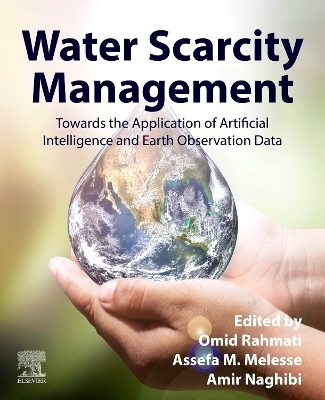
Water Scarcity Management
Elsevier - Health Sciences Division (Verlag)
978-0-443-26722-2 (ISBN)
- Noch nicht erschienen (ca. Mai 2025)
- Versandkostenfrei
- Auch auf Rechnung
- Artikel merken
Dr. Omid Rahmati is a Geo-environmental Researcher and Assistant Professor at the AREEO institute, Iran. He has widespread research interests in risk, modeling, uncertainty, and decision-making in relation to natural hazards and natural resources management. He has published over 70 articles in international peer-reviewed journals and has been cited over 7000 times. He has been selected as the Highly Cited Researchers (the world’s top 1% scientists) in 2022 and 2023 based on the Web of Science (Clarivate) who has demonstrated broad and significant influence reflected in his publications over the last decade. Professor Assefa M. Melesse is a Professor of Water Resources Engineering at Florida International University. He earned his ME (2000) and PhD (2002) from the University of Florida in Agricultural Engineering. His areas of research and experience include climate change impact modeling, watershed modeling, ecohydrology, sediment transport, surface and groundwater interactions modeling, water–energy–carbon fluxes coupling and simulations, remote sensing hydrology, river basin management, and land cover change detection and scaling. Dr. Melesse is a registered Professional Engineer (PE) and also Diplomate of Water Resources Engineer (D. WRE) with over 30 years of teaching and research experience, and has authored/edited 7 books, over 215 journal articles, and over 90 book chapters. Amir Naghibi is an Assistant Professor in the division of Water Resources Engineering and Center for Advanced Middle Eastern Studies at Lund University, in Sweden. He has Broad research interests in hydrology, climate change impact modeling, watershed modeling, surface and groundwater interactions modeling, natural hazards modeling, remote sensing hydrology, and artificial intelligence. He develops AI-based decision support systems on water, agriculture, environment, and natural hazards in order to facilitate decision-making procedure with a transboundary, international, and systematic mindset at national, continental, and global scales. He has published more than 40 papers and in international peer-reviewed journals and his publications have been cited over 4000 times who has demonstrated broad and significant influence reflected in his publications over the last decade.
1. Drought and water scarcity crisis: overview of challenges and solutions
2. Spatial modeling of drought potentiality using support vector machine algorithm
3. Relations between land subsidence and water scarcity
4. Investigation of physical water scarcity using GRACE and TRMM satellite data
5. Discover the world of drought and water scarcity indices: insights for a sustainable future.
6. Exploring the interplay of water scarcity and dust emissions: the role of environmental justice in mitigating impacts.
7. Groundwater potential mapping: a way for mitigating water scarcity.
8. Predicting wildfire as a function of meteorological drought.
9. Integrated assessment of the vulnerability of socio-ecological coupled systems of coastal areas to drought
10. The effect of climatic and human factors on hydrological drought
11. Integration of DInSAR and groundwater data for land subsidence susceptibility mapping
12. Applying remote sensing in drought studies and assessing its effects on the ecosystem.
13. Assessing groundwater dynamics in the arid and semi-arid regions.
14. Prediction of the groundwater-level fluctuations for better management of water scarcity
15. Technological Innovations in Water Conservation: Navigating Drought and Water Scarcity
16. Relationships between water scarcity and dust storm: developing new mitigation strategies with an interdisciplinary approach.
17. Are catchments recovering from drought?
| Erscheint lt. Verlag | 1.5.2025 |
|---|---|
| Verlagsort | Philadelphia |
| Sprache | englisch |
| Maße | 191 x 235 mm |
| Themenwelt | Naturwissenschaften ► Geowissenschaften ► Hydrologie / Ozeanografie |
| ISBN-10 | 0-443-26722-7 / 0443267227 |
| ISBN-13 | 978-0-443-26722-2 / 9780443267222 |
| Zustand | Neuware |
| Haben Sie eine Frage zum Produkt? |
aus dem Bereich


